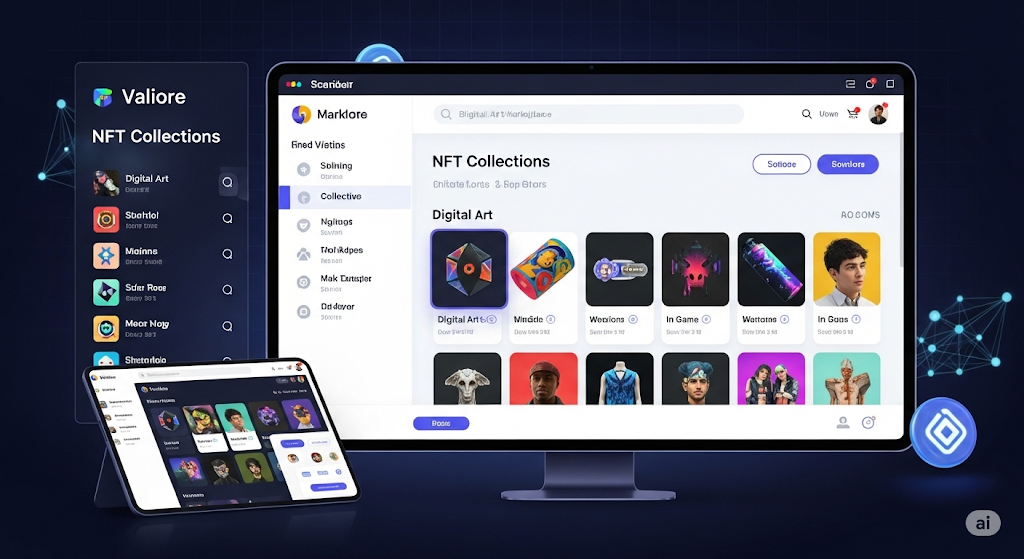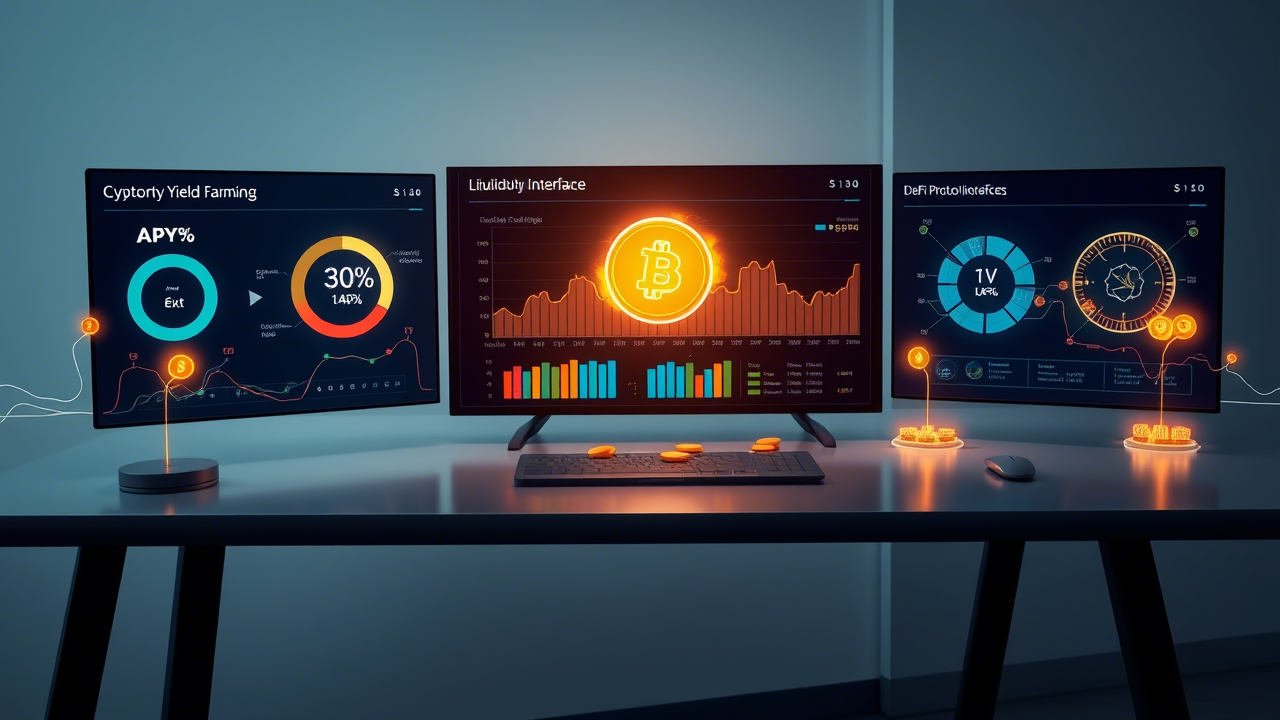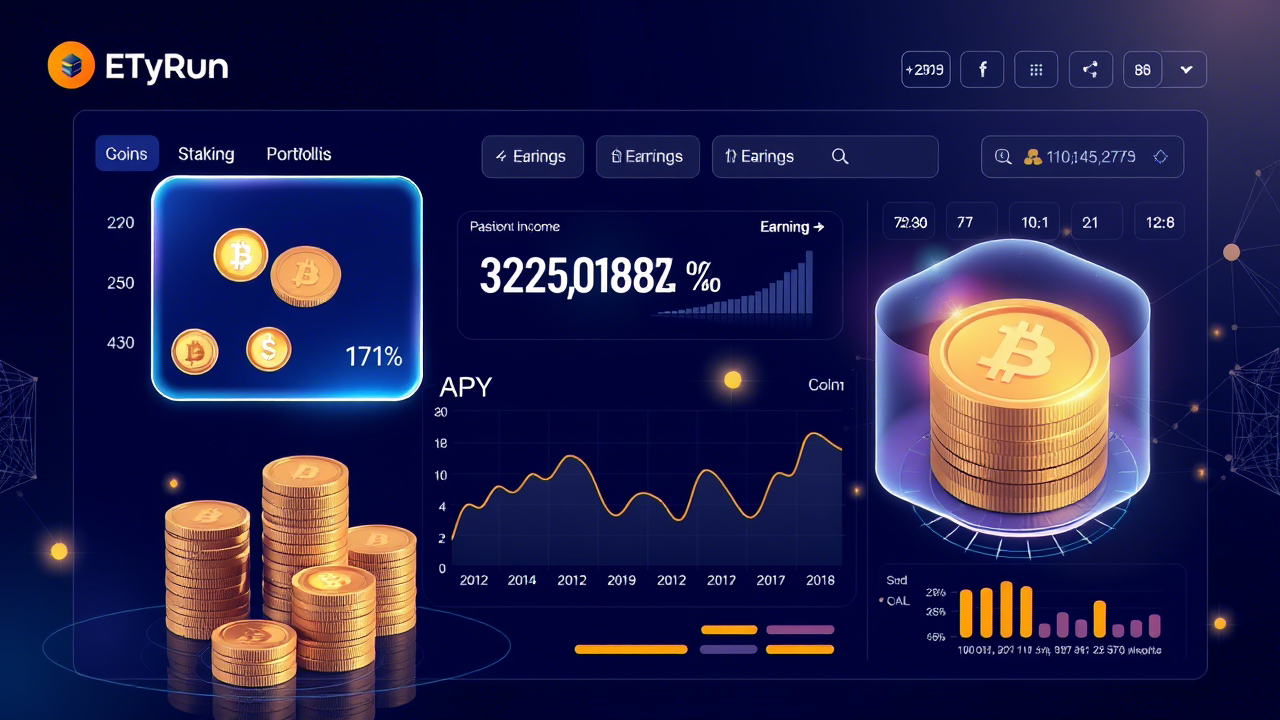The digital revolution has completely transformed how we think about money creation and wealth generation. While many people focus on buying cryptocurrencies directly, cryptocurrency mining offers a unique opportunity to earn digital assets by contributing computational power to blockchain networks. This comprehensive guide explores everything you need to know about cryptocurrency mining, from understanding the basics to implementing profitable strategies that can generate consistent returns.
What is Cryptocurrency Mining
Cryptocurrency mining serves as the foundation of blockchain networks, acting as the mechanism that validates transactions and maintains network security. When you mine cryptocurrency, your computer solves complex mathematical problems that verify and record transactions on the blockchain. This process requires significant computational power and energy consumption, but miners receive newly created coins and transaction fees as rewards.
The mining process involves collecting pending transactions from the network, verifying their authenticity, and packaging them into blocks. These blocks are then added to the blockchain through a competitive process where miners race to solve cryptographic puzzles. The first miner to solve the puzzle gets to add the block to the chain and receives the block reward plus any transaction fees included in those transactions.
Understanding cryptocurrency for beginners helps you grasp why mining is essential for maintaining decentralized networks without central authorities.
How Cryptocurrency Mining Works
The mining process begins when transactions are broadcast to the network and collected into a pool where they wait for validation. Miners select transactions from this pool and attempt to create a valid block by finding a hash that meets specific criteria. This requires trying billions of different combinations, making it computationally intensive but cryptographically secure.
Mining difficulty adjusts automatically based on the total network computing power. As more miners join the network, the difficulty increases to maintain consistent block creation times. This self-regulating mechanism ensures that new blocks are created at regular intervals, regardless of how many miners are participating.
The blockchain technology behind mining ensures that no single entity can control the network or manipulate transaction records, making it a trustless system.
Is Cryptocurrency Mining Legal
The legality of cryptocurrency mining varies significantly across different jurisdictions worldwide. In most developed countries, including the United States, Canada, and European Union nations, cryptocurrency mining is perfectly legal. These regions generally treat mining as a legitimate business activity, subject to standard business regulations and tax obligations.
However, some countries have imposed restrictions or outright bans on cryptocurrency mining. China has implemented comprehensive bans on cryptocurrency mining due to environmental concerns and financial stability considerations. Other countries like Iran and Turkey have imposed temporary bans or strict regulations on mining activities.
Before starting any mining operation, research local laws and regulations thoroughly. Consider factors such as business licensing requirements, tax implications, and environmental regulations. Some jurisdictions may require specific permits for large-scale mining operations, while others may impose restrictions on residential mining due to noise and power consumption concerns.
Mining Equipment and Hardware Selection
Selecting appropriate mining equipment is crucial for building a profitable mining operation. The choice depends on several factors, including the cryptocurrency you want to mine, your budget, available space, and local electricity costs.
ASIC Miners
ASIC (Application-Specific Integrated Circuit) miners dominate Bitcoin mining due to their superior hash rates and energy efficiency. These purpose-built machines are designed specifically for mining particular cryptocurrencies and offer the best performance per watt ratio. Popular models include the Antminer S19 series, which offers hash rates exceeding 100 TH/s.
GPU Mining Rigs
GPU mining remains viable for many altcoins, particularly those using memory-intensive algorithms. High-end graphics cards like the NVIDIA RTX 4090 and AMD RX 7900 series offer excellent mining performance. GPU mining rigs typically consist of multiple graphics cards connected to a single motherboard, allowing for flexible and scalable operations.
CPU Mining
While less common, CPU mining still has applications for certain cryptocurrencies, particularly newer projects or those specifically designed to resist ASIC mining. Modern multi-core processors can provide decent mining performance for specific algorithms, though profitability is generally limited.
Cryptocurrency Mining Calculator Analysis
Mining profitability depends on numerous factors, including hash rate, electricity costs, mining difficulty, and cryptocurrency prices. Cryptocurrency mining calculators help estimate potential profits by considering these variables. Popular calculators include WhatToMine, CoinWarz, and NiceHash profitability calculators.
To use a mining calculator effectively, input your hardware specifications, electricity costs, and pool fees. The calculator will estimate your daily, weekly, and monthly profits based on current market conditions. Remember that these calculations are estimates, and actual results may vary due to market volatility and changing network conditions.
Profitability can change rapidly in the cryptocurrency market. Factors such as network difficulty adjustments, cryptocurrency price fluctuations, and new hardware releases can significantly impact mining returns. Understanding crypto prices and market analysis helps you make informed decisions about mining profitability.
Mining Software Solutions
Mining software serves as the interface between your hardware and the blockchain network. Different cryptocurrencies often require specific mining software, though some programs support multiple algorithms. Popular mining software includes CGMiner, BFGMiner, and EasyMiner for various cryptocurrencies.
CGMiner remains one of the most popular open-source mining programs, supporting multiple hardware types and mining pools. It offers advanced features like fan speed control, remote interface capabilities, and multi-GPU support. BFGMiner focuses on ASIC and FPGA mining, providing extensive customization options and monitoring capabilities.
EasyMiner provides a user-friendly graphical interface, making it ideal for beginners. It supports both solo mining and pool mining across multiple cryptocurrencies. When selecting mining software, consider factors such as hardware compatibility, supported algorithms, ease of use, and additional features like monitoring and remote management capabilities.
Mining Pool Strategies
Pool mining has become the standard approach for most cryptocurrency miners, as it provides more consistent returns compared to solo mining. Mining pools combine the computational power of multiple miners to increase the chances of successfully mining blocks. Rewards are then distributed among pool members based on their contributed hash power.
Popular mining pools include Slush Pool, one of the oldest and most established Bitcoin mining pools, F2Pool which supports multiple cryptocurrencies with competitive fees, and Antpool operated by Bitmain. When selecting a mining pool, consider factors such as pool fees, payout methods, minimum payout thresholds, and geographic server locations.
Pool fees typically range from 1% to 3% of mining rewards, while payout methods vary from pay-per-share to pay-per-last-N-shares systems. The choice of pool can significantly impact your mining profitability and payment consistency.
Environmental Considerations in Mining
Environmental concerns have become increasingly important in cryptocurrency mining discussions. The industry has responded with initiatives focused on renewable energy adoption and more efficient mining practices. Sustainable mining practices include using renewable energy sources like solar, wind, and hydroelectric power to reduce environmental impact.
Some mining operations invest in carbon offset programs, while others focus on heat recovery systems that repurpose waste heat for heating buildings or industrial processes. Efficiency improvements through newer hardware offer better performance per watt, reducing overall energy consumption per unit of mining output.
Green mining initiatives include solar-powered mining farms, operations utilizing abundant hydroelectric power, and facilities powered by wind energy. These approaches not only reduce environmental impact but often provide cost advantages through lower electricity prices.
Mining Profitability Optimization
Maximizing mining profitability requires continuous optimization and strategic planning. Advanced miners employ various techniques to improve their operations’ efficiency and returns. Profit switching involves automatically switching between different cryptocurrencies based on real-time profitability calculations.
Hardware optimization includes tuning settings for maximum efficiency, implementing effective cooling systems to reduce energy consumption, and establishing proactive maintenance schedules to maximize hardware lifespan. Power management strategies involve negotiating favorable electricity rates and implementing load balancing systems.
Understanding crypto trading strategies can help you decide when to sell mined coins versus holding them for potential price appreciation.
Risk Management in Mining Operations
Mining operations face various risks that can significantly impact profitability. Market volatility affects mining profitability as cryptocurrency prices fluctuate. Regulatory changes can impact mining operations, while hardware failure can result in significant losses and downtime.
Effective risk management strategies include diversifying mining operations across multiple cryptocurrencies to reduce exposure, maintaining appropriate insurance coverage for equipment and operations, and implementing hedging strategies to protect against price volatility. Redundancy planning involves maintaining backup equipment and power systems to minimize downtime.
Regular monitoring of operations and market conditions helps identify potential issues before they impact profitability. Having contingency plans for various scenarios ensures business continuity during challenging periods.
Cloud Mining vs Hardware Mining
Cloud mining offers an alternative to purchasing and maintaining physical mining equipment. This approach allows individuals to rent mining power from remote data centers, avoiding the technical challenges and capital requirements of hardware mining. Cloud mining contracts typically specify hash power, duration, and associated costs.
However, cloud mining comes with its own set of risks and considerations. Contract terms may not always be favorable, and the lack of physical control over mining equipment can be concerning. Additionally, many cloud mining services have proven to be scams, making due diligence essential.
Hardware mining provides complete control over your mining operation but requires significant upfront investment and ongoing maintenance. The choice between cloud and hardware mining depends on your technical expertise, available capital, and risk tolerance.
Future of Cryptocurrency Mining
The cryptocurrency mining industry continues to evolve with technological advances and changing market conditions. Emerging technologies like artificial intelligence optimization, advanced cooling systems, and improved hardware efficiency are shaping the future of mining.
Industry trends include increasing institutional adoption, with large corporations entering the mining space, and growing regulatory clarity in major markets. There’s also continued emphasis on energy efficiency and environmental sustainability, driving innovation in renewable energy integration.
The development of new consensus mechanisms like Proof of Stake may reduce the role of traditional mining for some cryptocurrencies. However, Proof of Work networks like Bitcoin continue to rely on mining for security and decentralization.
Understanding investing in cryptocurrency helps you evaluate whether mining fits into your broader investment strategy.
Getting Started with Cryptocurrency Mining
For beginners looking to start mining, education is the first step. Learn about blockchain technology, mining algorithms, and market dynamics before making any investments. Research different cryptocurrencies and their mining requirements to identify suitable opportunities.
Start with calculating costs accurately, including electricity expenses, hardware costs, and potential returns. Begin with modest investments to gain experience before scaling up operations. Joining mining communities can provide valuable advice and support from experienced miners.
Consider starting with crypto apps that help you track mining profitability and manage your operations effectively.
Mining Security and Wallet Management
Securing your mining rewards requires proper wallet management and security practices. Use reputable crypto wallets to store your mined cryptocurrencies safely. Consider using hardware wallets for long-term storage of significant amounts.
Implement strong security practices including two-factor authentication, regular software updates, and secure network configurations. Monitor your mining operations regularly for any suspicious activity or security breaches.
Keep detailed records of your mining activities for tax purposes and operational analysis. Regular backups of wallet files and important data ensure you don’t lose access to your mined cryptocurrencies.
Scaling Mining Operations
As you gain experience and success with mining, you may consider scaling your operations. This involves careful planning for increased power requirements, cooling systems, and space needs. Scaling requires significant capital investment and operational expertise.
Consider factors such as location selection, power infrastructure, and regulatory compliance when expanding. Industrial-scale mining operations require specialized facilities and professional management to maintain profitability.
Alternative scaling approaches include joining mining cooperatives or investing in mining companies rather than expanding individual operations. These options can provide exposure to mining profits without the complexities of large-scale operations.
Tax Implications of Mining
Cryptocurrency mining has specific tax implications that vary by jurisdiction. In most countries, mining rewards are treated as income at the time of receipt, valued at the fair market price when mined. This means you owe taxes on the value of coins when you mine them, not when you sell them.
Keep detailed records of mining activities, including dates, amounts mined, and market values. Track all mining-related expenses, including equipment purchases, electricity costs, and maintenance expenses, as these may be deductible business expenses.
Consider consulting with tax professionals who understand cryptocurrency taxation to ensure compliance with local laws and optimize your tax situation.
Also visit: www.coinmarketcap.com
Frequently Asked Questions
What is the minimum investment required to start cryptocurrency mining?
The minimum investment varies significantly based on your chosen approach. Cloud mining can start with as little as $100, while a basic GPU mining rig might require $2,000-$5,000. Professional ASIC mining operations typically need $10,000 or more for meaningful profitability.
How much electricity does cryptocurrency mining consume?
Mining electricity consumption depends on the hardware used and operation scale. A single ASIC miner might consume 1,000-3,000 watts, while a GPU mining rig could use 500-1,500 watts. Large mining farms can consume several megawatts of power, making electricity costs a major operational expense.
Can I mine cryptocurrency without specialized hardware?
While technically possible, mining without specialized hardware is generally unprofitable for established cryptocurrencies. Some newer projects still allow profitable CPU or GPU mining, but these opportunities are becoming increasingly rare as networks mature and competition increases.
Is cryptocurrency mining considered passive income?
Mining requires active management and monitoring to remain profitable. While the mining process itself runs automatically, successful operations require regular maintenance, market analysis, and strategic adjustments. It’s more accurate to consider mining as an active business rather than passive income.
What happens to mining when all coins are mined?
When all coins are mined, miners will continue to earn transaction fees for validating transactions. The economic model may change, but the network will still require miners to maintain security and process transactions. Transaction fees are expected to become more significant as block rewards decrease.
How does mining difficulty affect profitability?
Mining difficulty adjusts based on total network computing power. Higher difficulty means more competition and lower individual miner rewards. Difficulty increases can significantly impact profitability, especially for smaller operations, requiring continuous monitoring and strategy adjustments.
Final Thought
Cryptocurrency mining represents both a technological marvel and a business opportunity in the digital economy. While it offers the potential for significant returns, success requires careful planning, substantial investment, and ongoing management. The industry continues to evolve with technological advances and changing market conditions, creating new opportunities for those willing to adapt and innovate.
The key to profitable mining lies in understanding the fundamental principles, staying informed about market trends, and implementing effective strategies for risk management and optimization. Whether you’re a beginner exploring cloud mining options or an experienced operator managing large-scale facilities, the principles of efficiency, sustainability, and strategic thinking remain paramount.
As the cryptocurrency ecosystem matures, mining will likely become increasingly professional and competitive. However, opportunities will continue to emerge for those who approach mining with proper knowledge, realistic expectations, and a commitment to continuous learning and adaptation. The future of cryptocurrency mining looks bright for those who can navigate its complexities while embracing innovation and sustainability.












Leave a Reply